Crazy Water on the Dean
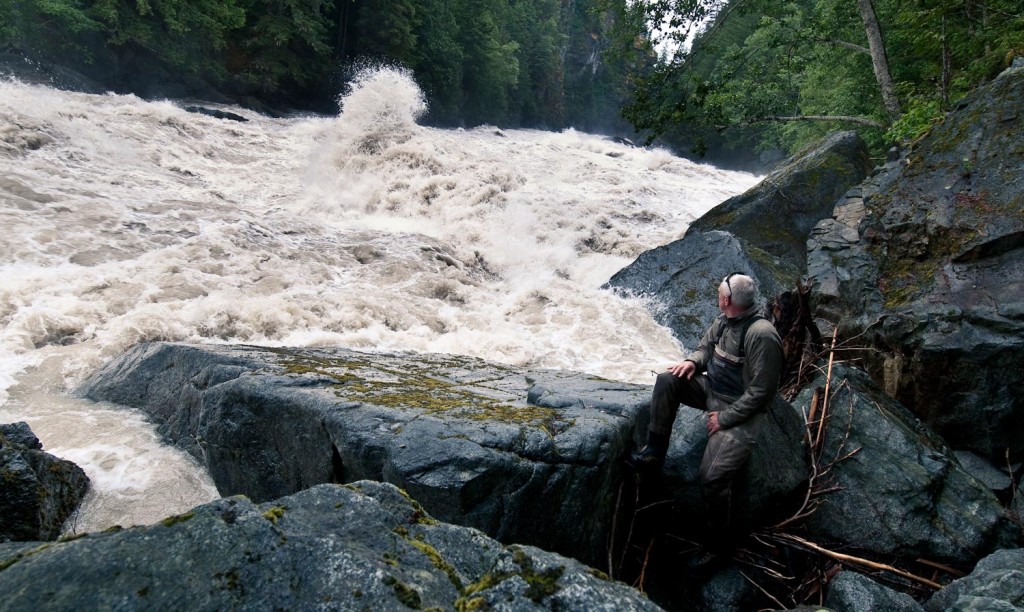
You will be reading more in the coming weeks about my trip to British Columbia to fish the Dean River.
In every post I will likely mention the tough fishing conditions. In order for you to really understand what I mean by “tough fishing conditions” I put together this little video.
I have never seen a river so crazy high. The fact that we fished the very next day and the fact that we caught fish that week is a testament to what a truly remarkable river the Dean is. I can’t wait to go back but I hope I have better conditions.
Check out the video!
Read More »Nets, Go Big or Go Home
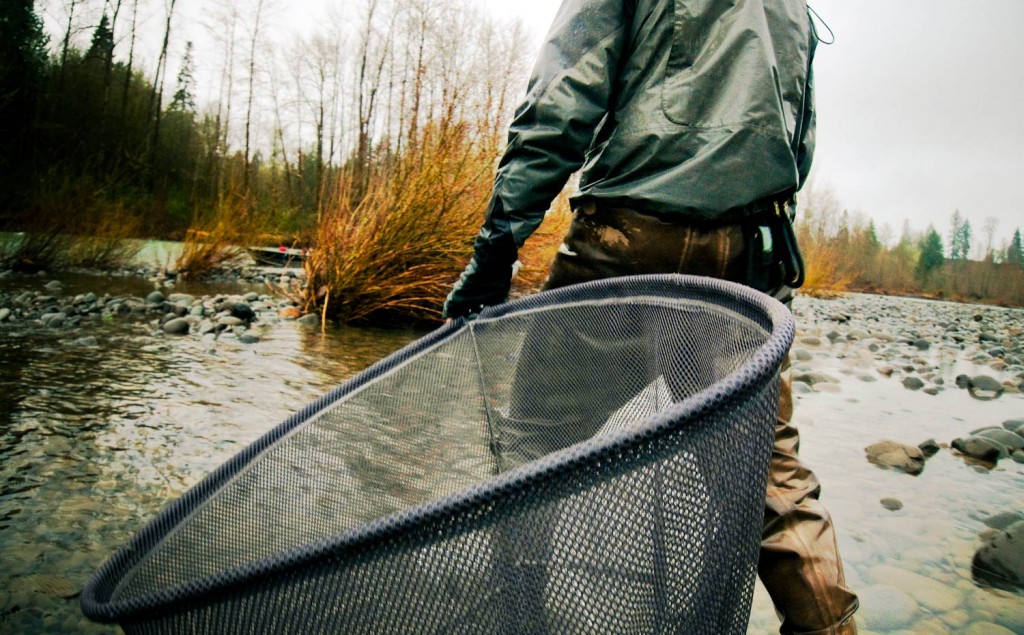
I received an email from a reader the other day asking advice on steelhead nets. I thought it was a topic worth some discussion. We put a lot of thought into rods, reels, lines and flies but often the piece of equipment that seals the deal is an afterthought. I was guilty of this for years, carrying a net that wasn’t up to the job for purely sentimental reasons. I finally realized it made no sense and tooled up.
HERE ARE A COUPLE OF THINGS THAT I LOOK FOR IN A NET.
Size Matters
Bigger is better and biggest is best! When your fighting the fish of a lifetime you don’t have time to run to Wal-Mart for a bigger net. Plan for success. My regular trout net is 20″ across. For steelhead you’ll want something bigger. It’s easier to net a tough fish and it gentler on them as well. Go big or go home.
The Bag
This is the most important thing to me. Traditional nets tear fins and remove slime from fish. The new rubber nets are the friendliest thing for the fish. Put them back the way you found them.
A Long Handel
I don’t care what they allow in competition, longer is better. If it means you net the fish faster it cuts down on the chance you will unbutton and it’s better for the fish.
Light Weight
I love the look of a wooden net but the big ones are too heavy to carry wading. I use the
The Ring of Fire
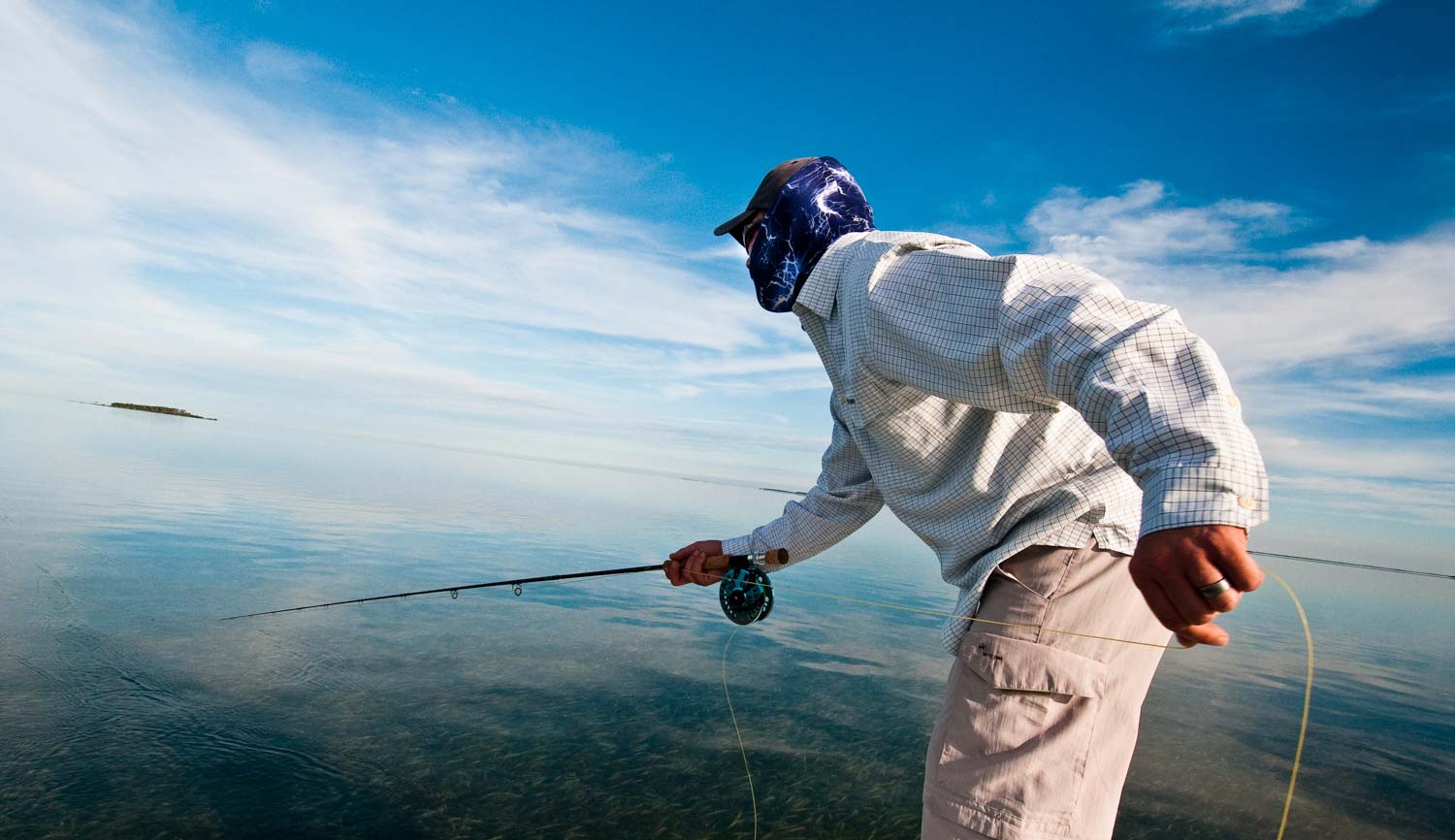
“For every species, anywhere in the world, there’s a ring of fire…” – Oliver White.
Oliver stopped by for dinner during the January Bonefish School at Bair’s Lodge this year, and it didn’t take long for the conversation to turn to his angling adventures around the world. One of the guests asked him, in his experience, how important is casting skill. The answer was, in summary, it’s everything.
Oliver began to spin the woven placemat, about the size of a vinyl LP, in front of him.
“For every species, anywhere in the world, there’s a ring of fire, put the fly in that ring and it will be eaten.” He lifted the placemat, “It’s about this big.”
Obviously, when we are talking about fly fishing at this level there are a hundred variables and choices the angler makes which affect success, but if the fly isn’t in the zone, you aren’t in the game. In spite of angry angler rants to the contrary, casting skill does matter. Anglers who can cast farther, more accurately, and in harsher conditions will catch more fish. That’s simple math. So, practice your casting, and I’ll leave it there. What is more interesting to me is the idea of knowing exactly where that placemat lands.
The ring of fire is always on the move.
Where exactly the fly should be placed is the first question an angler should ask themselves when making a presentation. Far more important
Read More »Build Your Own Fly Rod: DIY Video 7
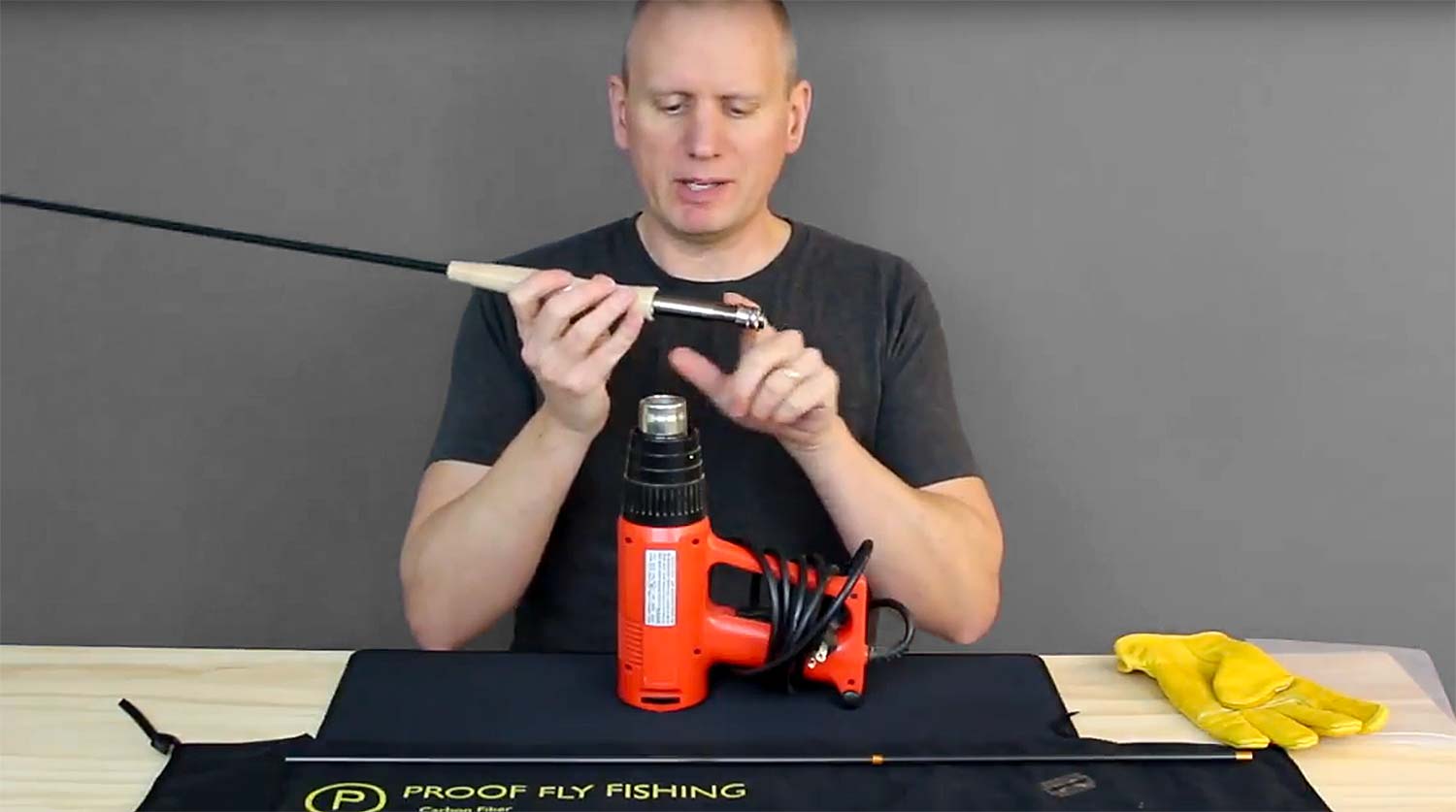
THAT NEW DIY FLY ROD IS JUST ABOUT READY TO FISH.
In this, the last video of the series, Matt Draft, of Proof Fly Fishing, shows you how to fix some common problems that happen when building a rod. These helpful techniques will ensure that your rod is perfect and will help with future repairs.
I hope you have enjoyed this series. If you decided to build your own fly rod using these videos as a guide, let us know how it went. You can leave a comment here and share photos on our FaceBook page or tag us on Instagram.
This is your last chance to take advantage of Matt’s free shipping offer so check out his site and use the code G&Gfreeship at checkout.
Read More »Tom Keck Is My Role Model
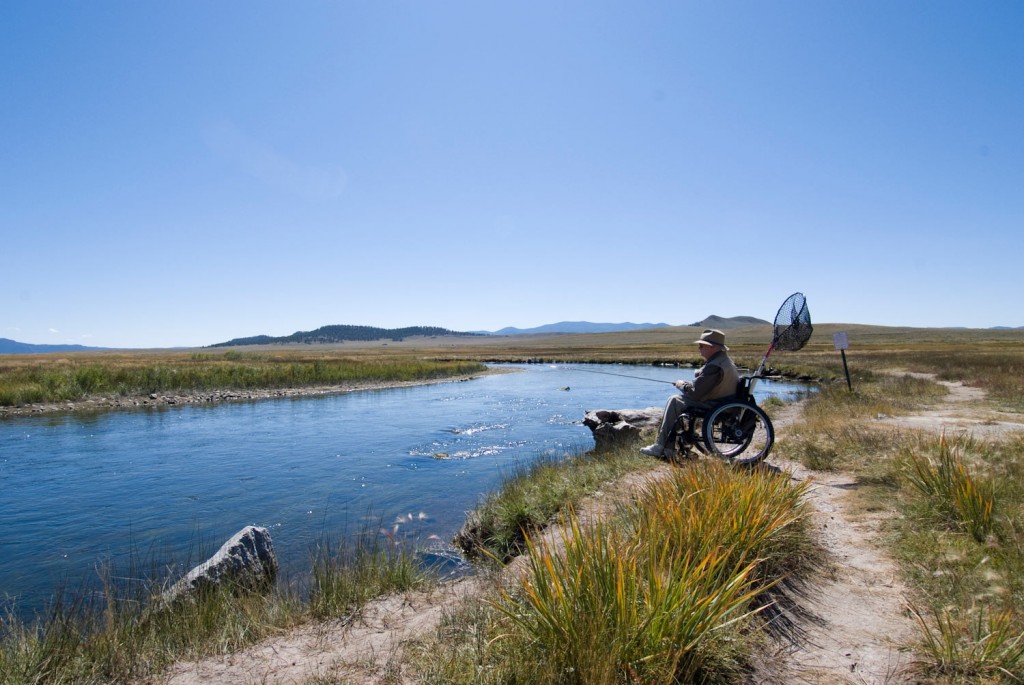
In September of 2009 I was fishing the South Platte below Spinney Reservoir, the stretch they call the Dream Stream.
When I noticed this gentleman casting trico patterns to the far bank…from a wheelchair. I watched for a bit as he worked a pod of rising fish with a long reach cast, occasionally fooling one and bringing it to the net that he had fashioned with an extra long handle. He would wheel himself down stream to the next rising fish, careful to travel far enough from the bank that he didn’t spook fish. It was an impressive display. I would find out just how impressive when I walked over and introduced myself.
Tom Keck, of Denver CO, is a likable fellow and a great fisherman. Generous with his knowledge of the S. Platte as well as with his beautifully tied flies. The flies he gave me turned out to be day makers. But don’t let his gentle demeanor fool you. This fellow is carved of wood. I asked him how he wound up in the wheel chair and this is the story I got. Ten or so years earlier, fishing the Platte at Deckers he had taken a bad fall. Alone, his back broken and paralyzed, he struggled in the fast water nearly drowning. Eventually he pulled himself to the shore and then to the road with his hands. There he found help but he never walked again. He also never stopped fishing the river he called his home water.
I’ve taken a few bad falls. Not like Tom’s but bad enough to make me wonder what I’d do if I were really hurt out there on my own. I hope I never have to answer that question but if I do I hope I’m half the man Tom is and can face it with the courage and
Read More »Think Twice About Your Tippet Size
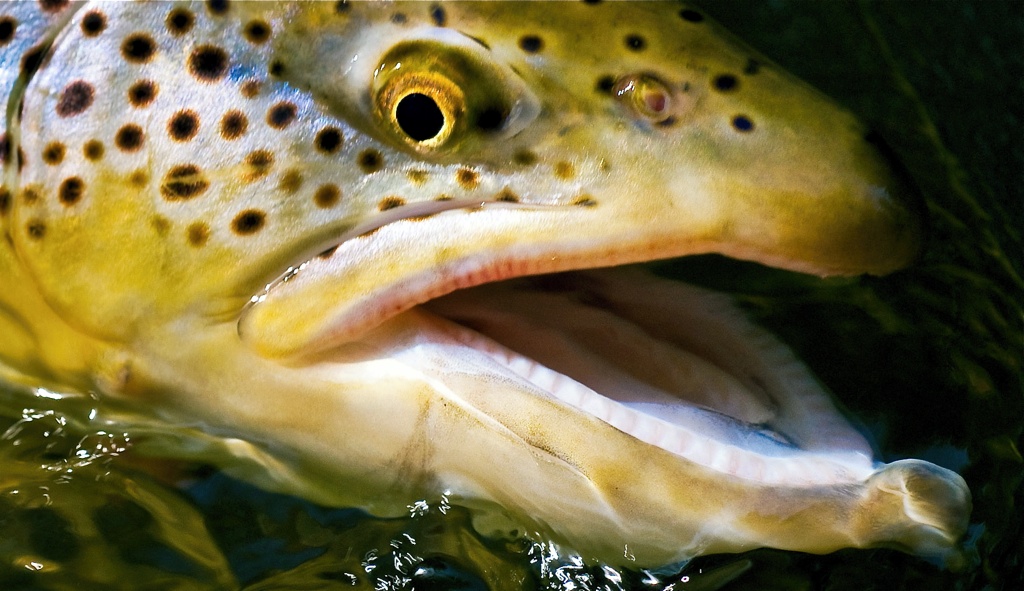
HAVE YOU EVER MADE THE MISTAKE OF CUTTING OFF YOUR DRY FLY OR NYMPH RIG AND QUICKLY TYING ON A STREAMER TO TARGET A BIG FISH?
You know, when your too lazy or in a hurry to take the time to upsize to the appropriate tippet size generally called for with streamers. I know I have, and it’s resulted in breaking off a big fish on more than one occasion. Big brown trout particularly have razor sharp teeth like a high quality serrated knife. I’ve seen a brown trout literally cut a trout in two after one quick bite. Their teeth ain’t no joke man. If you’re streamer fishing, use fluorocarbon tippet. It’s much better than monofilament for abrasion resistance. Lastly, don’t be shy to go big on your tippet size at first. It could make the difference between you landing or losing that trophy of a lifetime. You can always down size your tippet if you think your not getting bites because the fish are seeing the line.
Read More »3 Counterintuitive things tenkara has shown me
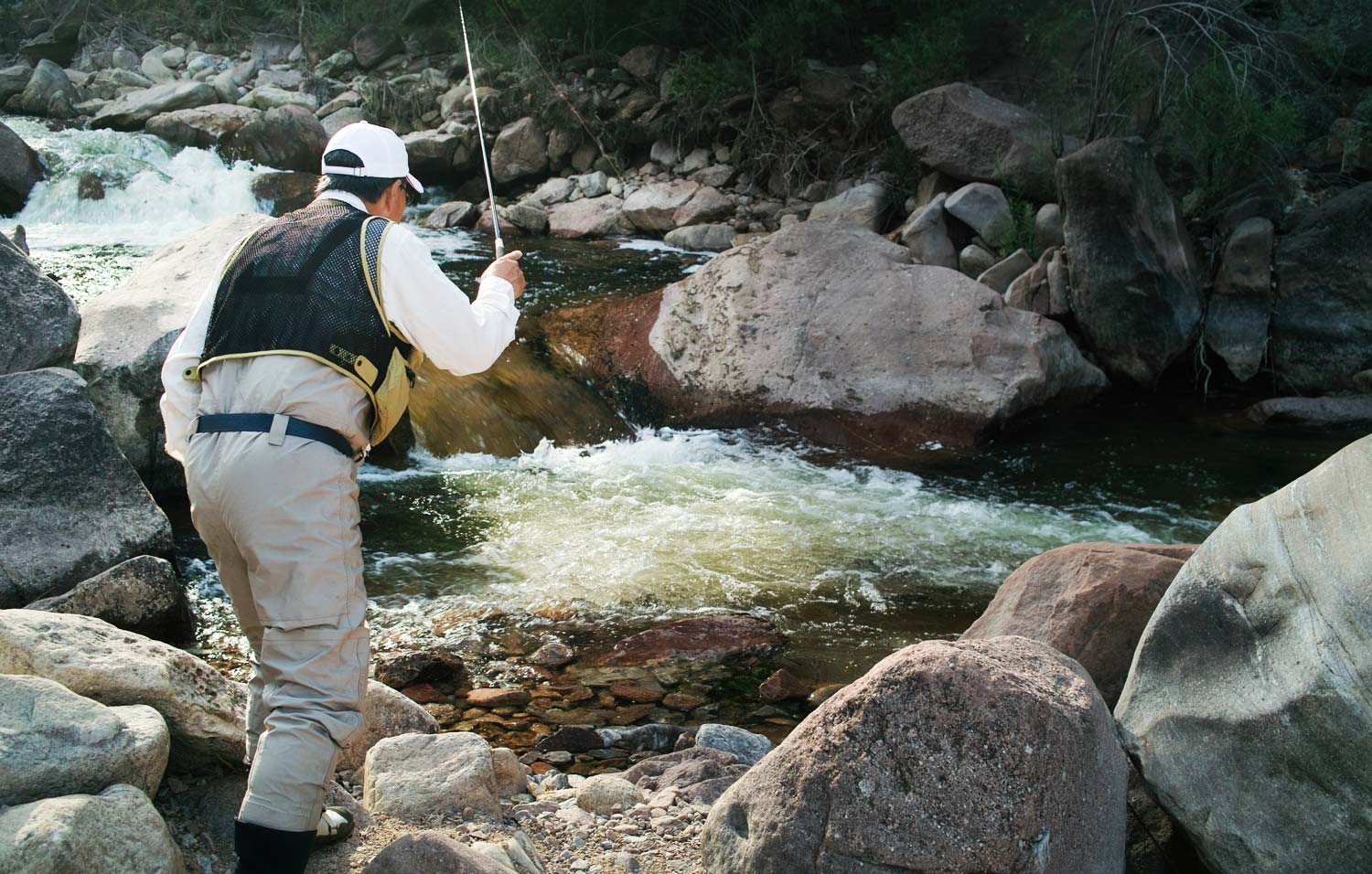
By Daniel Galhardo
Tenkara has taught and old dog some new tricks.
Since I started learning tenkara, it’s become obvious to me, that regardless of how intuitive the method is to the novice fly angler, some parts of tenkara are likely counterintuitive to the experienced fly angler.
HERE ARE A FEW THINGS ABOUT THAT ARE LIKELY COUNTERINTUITIVE ABOUT TENKARA TO THE EXPERIENCED FLY ANGLER:
A long rod is an asset in small streams
Small streams call for short rods. It makes sense right? Small mountain streams have always been my preferred playgrounds. Prior to my discovery of tenkara, my favorite rod was a soft action 7 ½ ft rod. It cast beautifully, I felt the force of the line loading it, and I felt I could maneuver it anywhere I wanted. But, that short rod probably contributed to my falling in love with tenkara. In streams we have this thing called drag. When line lays on the water, currents pick it up and drags the line downstream faster than the fly. Then, you have to mend. And, with that beautiful 7 ½ ft rod I had to mend…a lot. It was hard to achieve a good drift when fishing moving water. Like anyone else, I was absolutely intimidated by the idea of using a 12ft rod in those waters. That’s almost 5ft longer! That’s my whole wife’s worth of extra length. But, guess what, it worked. On my very first cast it was obvious that the dynamics caused by this new trigonometry had changed. I could fish pools on the other side of streams I liked without any mending. I certainly did not expect that. Nowadays you’ll find me using a 14ft 7inch long rod on my local Boulder Creek, a mountain stream that is about 25ft wide in most sections and a good amount of evergreens on its shores.
Let the rod bend!
It’s common knowledge: your fly rod is only designed to arc so much before it breaks, and to prevent breakages you should not have the rod pointed up with a deep bend on it. One is usually taught to keep a relatively low angle between the rod and the fish, lest it break. Yet, with tenkara there is no reel to allow a fish to take line. If your rod is at a low angle
Read More »Beginner Series: Fly Lines, Leaders, and Tippet

By Justin Pickett
So you’ve decided to dive into the world of fly fishing and need to outfit your new rod and reel purchase with a fly line, leaders and spools of tippet.
Does it matter what line you get? And what about leaders? What the hell is tippet?! These are all typical questions that the beginning angler will have, so don’t worry. We’re going to work on flattening that learning curve!
Fly Lines
To a beginner, trying to learn about all the little intricacies of fly line tapers is about like trying to rearrange deck chairs on the Titanic. The good news is that you don’t need to get too caught up in tapers and grain weights to catch fish. Learning about the various aspects of fly lines will certainly help you down the road, however we’re going to focus mainly on weight-forward, floating lines. Today’s fly rods are typically faster than those made even ten years ago, almost requiring a more compact, heavier line to properly load the rod. Some “beginner” lines are even manufactured a half weight heavier to help load today’s faster rods. As a beginner, a weight-forward line will better suit your casting needs with the more popular five weights found in fly shops, and a floating line will enable you to cover a large majority of fishing scenarios. All of the fly lines listed below are inexpensive and are great all-purpose fly lines whether you’re slinging parachute adams or foam poppers.
Airflow Super Dri
Orvis Clearwater WF
Scientific Anglers AirCel Trout
Rio Mainstream WF Trout
Leaders and Tippet
Leaders and tippet are other items that you will need in order to get going and hook up with that first fish. You’ll hear of many anglers that tie their own leaders and have their preferred recipes. While you may one day tie up your own leaders created from your own secret formula, for now, keep it simple. I would say
Read More »So You Wanna Run Down the Man?
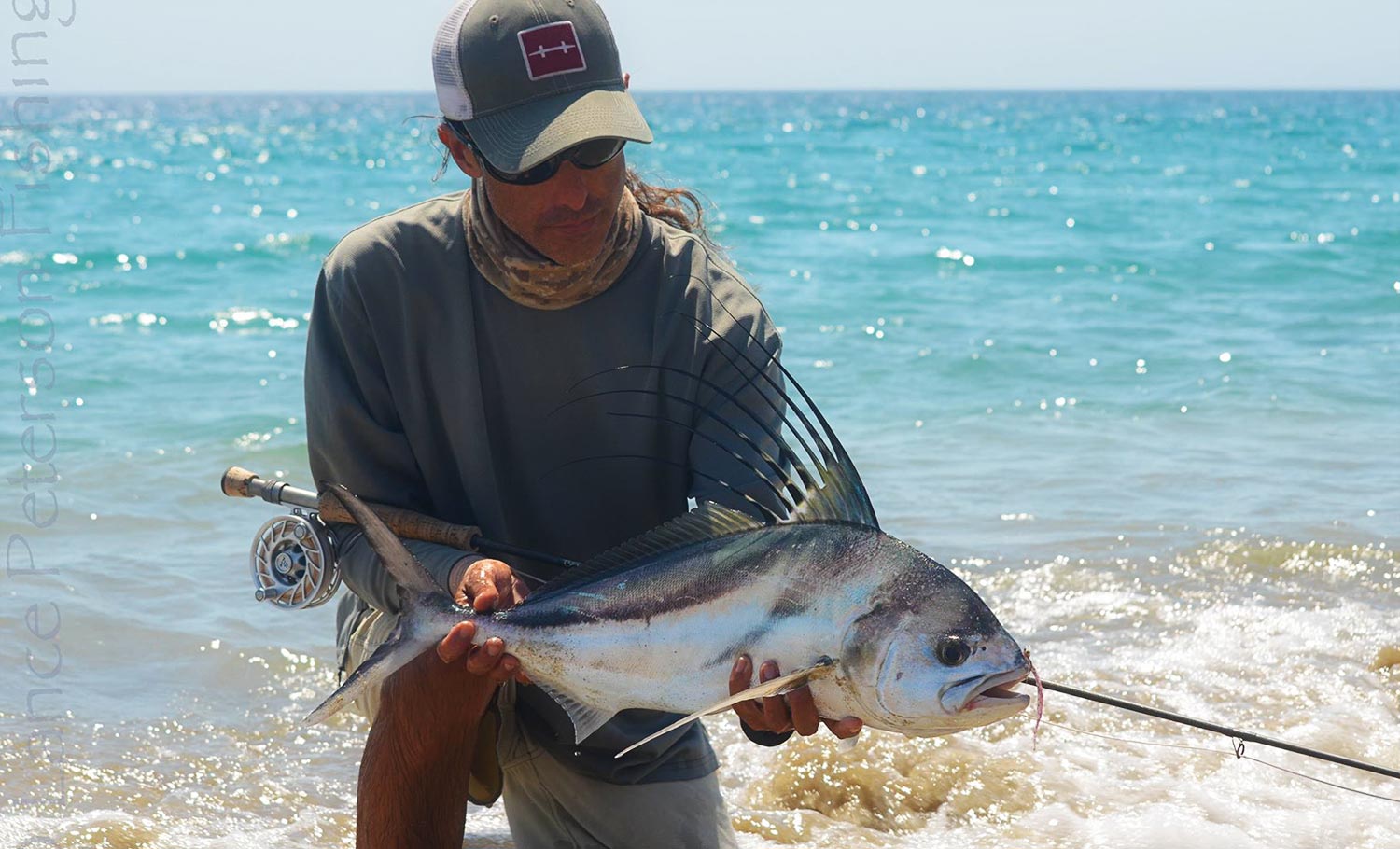
Roosterfish(pez gallo) in my opinion, are by far one the hardest fighting and elusive fish that can be pursued with a fly rod.
Most of you by now have seen some type of video where anglers are cruising down the beach in a side-by-side or quad, sprinting along pristine desolate beaches to make a hail Mary cast at a rooster 15 feet off the surf and then sipping margaritas in the evening celebrating their victory of the day. Well, you know the saying ‘that only happens in the movies’…although it’s not 100% true in this case, however you’re damn lucky if you head down to Baja and land one without preparing for this pursuit. Just to be clear, I’m not claiming to be the authority on how to catch roosters. My intention is to share what I’ve learned in my experiences down on the east cape of Mexico chasing them.
Background
To give you some background on how this obsession began, it wasn’t through any type of movie or social media pics of grandes (roosters 40lbs+) but actually through something I witnessed with my own two eyes. Back in May of 2012, my girlfriend and I had just broken up; so what better way to move on than a boys fishing trip to Cabo? With two of my more salt-worthy amigos on board, getting their passports stamped south of the border, coupled with the opportunity to land marlin, dorado, tuna, etc…it was game on. Since I was the one in charge of logistics I chose to stay just north of Cabo San Lucas in San Jose del Cabo so that we had fewer distractions from sleep at night, but was there if we “needed” it. Fishing with the Gordo Banks fleet, on our second day while at the dock one of the captains mentioned there were lots of roosters on the beach. Even though all of us had billfish on our cloudy sleep-deprived brains, we decided, “why not?” We trolled for them about 50ft off the beach using cabillito and landed a good number among the three of us. But on one our passes while trolling, I noticed something on the beach after the wave retracted. It was probably close to a 30lb rooster laying on the sand. For a second I wondered, was it dead?? And then the next wave came in and the mystery was solved as I saw four to five different sets of rooster combs going ballistic chasing baitfish onto the beach. And then again, one guy didn’t make the last call and was stuck waiting for the next wave to take him back to the lion’s den. I had never seen any fish exhibit that type of aggression, and at that point I remember thinking, “man, I bet they are fun as hell on a fly rod.”
In late spring, 2014, with a couple additional trips back to southern Baja under my belt, I decided that I needed more time to dedicate chasing roosters. So I moved down to Los Barriles, a small town about 70 miles north of San Jose Del Cabo, located smack in the middle of rooster alley for 5 months. Now that might raise some questions. I work remotely so as long as I have a stable internet connection with decent speeds, I’m good to go. With my quad that I had purchased back in San Diego rigged with rod holders and baskets for ample storage I was ready to tangle with some of those grandes on my 10wt, or so I thought.
Lessons Learned & Words of Advice
Logistics
Travel — Getting to the East Cape of Mexico is pretty straightforward and can be fairly inexpensive depending on where you are flying from. If you’re really adventurous, the drive through the Baja peninsula is something I’d recommend doing at least once in your life. From San Diego, it’s just about 1600 miles zig-zagging back and forth from coast to coast. Just make sure you’ve got a reliable car or at least one that has a working fuel gauge — unlike us. Blinkers are also a good thing to have, as well. If you do chose to fly, getting from the airport to basecamp does not require you to rent a car, in fact I’d say it really isn’t needed as the only required mode of transportation has to be able to drive on the beach (do not think renting a jeep will work). There’s a shuttle (EcoTours) that runs from SJD airport right into the town of Los Barriles that has AC and it’s usually a good time.
Base Camp — Establishing a base camp on the East Cape
Shooting Line In The Backcast Is A Skill Every Fly Angler Needs
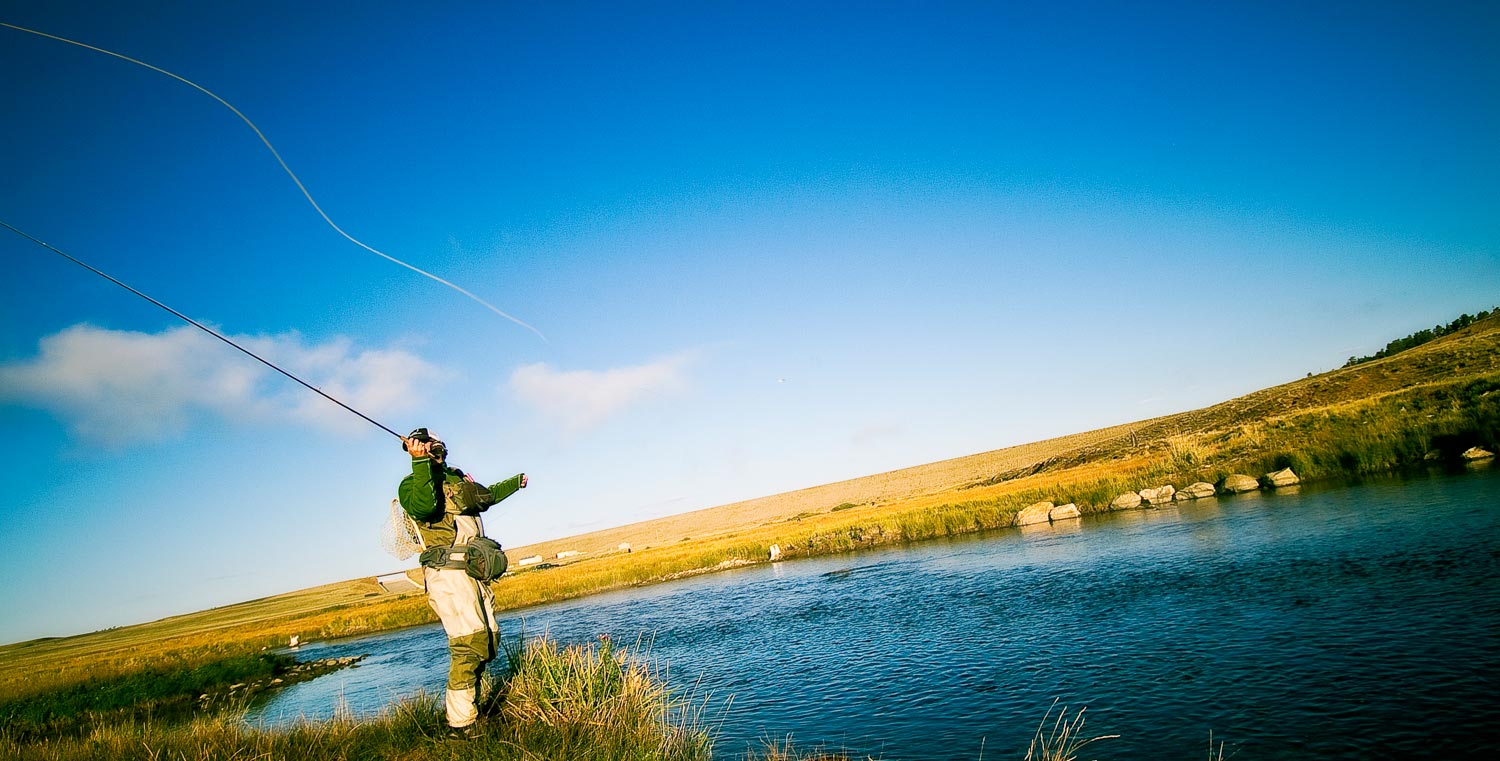
THERE ARE A LOT OF MOVING PARTS IN A FLY CAST.
There’s a lot of talk about the double haul and the tight loop, and there should be, they are hugely important skills that every angler should practice. It always surprises me, however, how many experienced anglers can’t, or don’t, shoot line in their backcast. I’m also surprised I don’t hear more about it.
I consider this simple technique essential for every type of fly fishing. The efficiency of working out line on both ends of the cast translates to more fish in hand in almost every situation. I don’t remember when I started casting this way. It’s a habit I’ve had for as long as I remember. I do remember when I became aware of its importance.
I was working with my friend Bruce Chard who was teaching casting to some anglers new to saltwater fishing. I picked up a rod and made a cast. Bruce stopped the group and pointed out that I was shooting twenty feet or so of line on every backcast. I wasn’t even aware of it but his point was spot on.
“He’s going to reach the fish in half the false casts,” he told the group. It’s nice to be told that you’re doing something right but for me it was just instinctive. The fly cast is symmetrical. It makes no sense to shoot line on your forward cast and not on your backcast.
Here are a few of the reasons you should practice this technique if you’re not doing it already.
Read More »